Focke-Wulf Fw 190 A-6
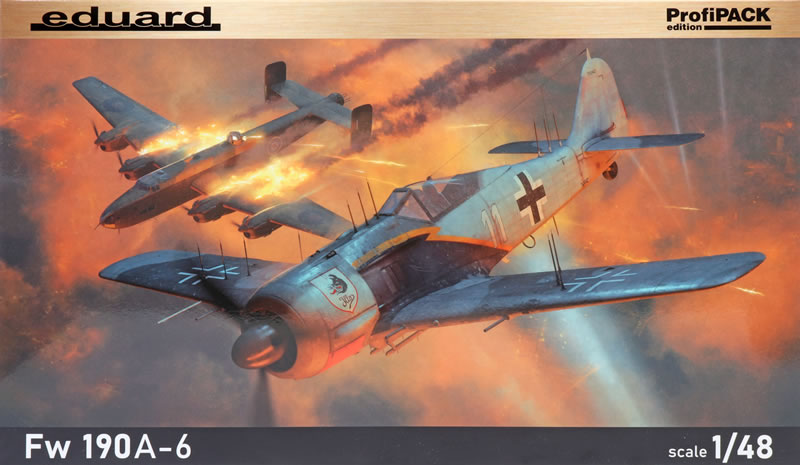
Eduard ProfiPACK, 1/48 scale
S
u m m a r y |
| Catalogue Number: |
Eduard ProfiPACK Kit No. 82137 - Fw
190 A-6 |
| Scale: |
1/48 |
| Contents and Media: |
Around 200 parts in grey coloured plastic (many not for use depending on the versions built);
10 parts in clear; one colour photo-etched fret; self-adhesive masks; markings for
five varied options. |
| Price: |
USD$49.95 plus shipping,
available online from Eduard
GBP£27.80 (£23.17 Export Price) plus shipping available online from Hannants |
| Review Type: |
FirstLook |
| Advantages: |
Restrained surface
featuring crisp panel lines and very fine rows of recessed rivets where
appropriate; engineered without plugs/inserts; plenty of ordnance options; includes colour photo-etched parts for harness and
instrument panel; masks supplied for wheels and canopies; clever design of
clear parts with separate sliding sections for open and closed canopies; attractive marking options; very high quality
plastic; narrow sprue attachments; excellent instructions and packaging; plenty of spare parts! |
| Disadvantages: |
|
| Recommendation: |
An excellent kit of this important Wurger variant. |
Reviewed by Brett Green

The Fw 190 A-6 was developed to address shortcomings found in previous "A" models when attacking U.S. heavy bombers.
Modifications of the type to date had caused the weight of the aircraft to creep up. To combat this and to allow better weapons to be installed in the wings, a structurally redesigned lighter, stronger wing was introduced.
The normal wing armament was increased to four 20 mm MG 151/20E wing root and outer wing cannon with larger ammunition boxes while retaining the two MG 17 fuselage machine guns. New electrical sockets and reinforced weapon mounts were fitted internally in the wings to allow the installation of either 20 mm or 30 mm (1.18 in) ammunition boxes as well as for underwing armament. Because the outer wing MG 151s were mounted lower than the MG/FFs, new, larger hatches incorporating bulges and cartridge discharge chutes, were incorporated into the wing lower surfaces.
It is believed the fuselage MG 17s were kept because their tracer rounds served as a targeting aid for the pilots.

A new FuG 16 ZE radio navigation system was fitted in conjunction with a FuG 10 ZY. A loop aerial for radio navigation, mounted on a small "teardrop" base was fitted under the rear fuselage, offset slightly to port, with an additional short "whip" aerial aft of this. These aerials were fitted on all later Fw 190 variants.
The A-6 was outfitted in numerous ways with various sets, Rüstsätze (field modification kits); more flexible than the factory upgrade kits for previous versions, these field upgrade kits allowed the A-6 to be refitted in the field as missions demanded.
In late 1943, the Erla Maschinenwerke's Antwerp factory designed a simpler rack/drop-tank fitting, which was more streamlined than the bulky ETC 501 and could be quickly fitted or removed. Several A-6s, A-7s and A-8s of JG 26 were fitted with these racks (one such aircraft was A-8 W.Nr.170346 Black 13 flown by Obstlt. Josef Priller during the Normandy invasion on 6 June 1944.)
At least 963 A-6s were built from July 1943 ending in April 1944, according to Ministry of Aviation acceptance reports and Focke-Wulf production books.
Adapted from Wikipedia.
This Eduard 1/48 scale Fw 190 A-6 kit shares no parts at all in common with Eduard's 2007 1:48 scale Fw 190 A-6 kit. Engineering and ease of assembly of Eduard's more recent new releases are greatly superior to the original kits.
Beneath the very attractive box art, Eduard's reissued1/48 scale Fw 190 A-6 ProfiPACK release contains nearly 200 parts in grey plastic and 10 clear plastic parts, plus a colour photo-etched fret, canopy and wheel masks, markings for five nicely varied aircraft plus stencil decals. However, it is important to note that the total grey plastic parts actually used is only around 110, and even some of these are options, so you will have plenty of fodder for your spares box!
The kit features superb
surface textures comprising crisp panel lines and very fine rows of recessed rivets where appropriate.
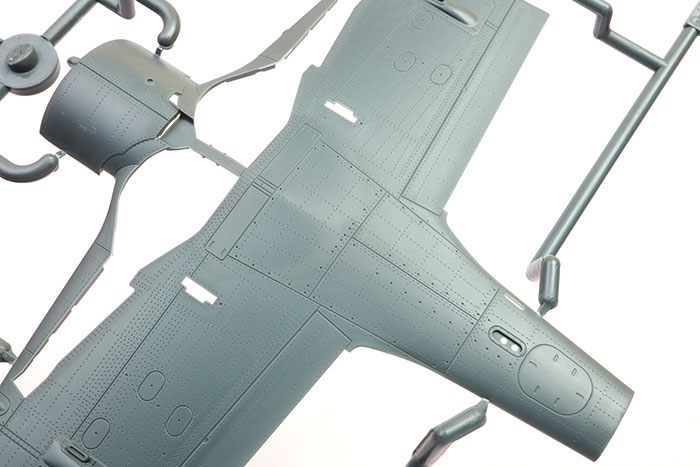
The wings are supplied without inserts for bulges and panels - just nice full span lower wing and two single-piece upper wing halves.
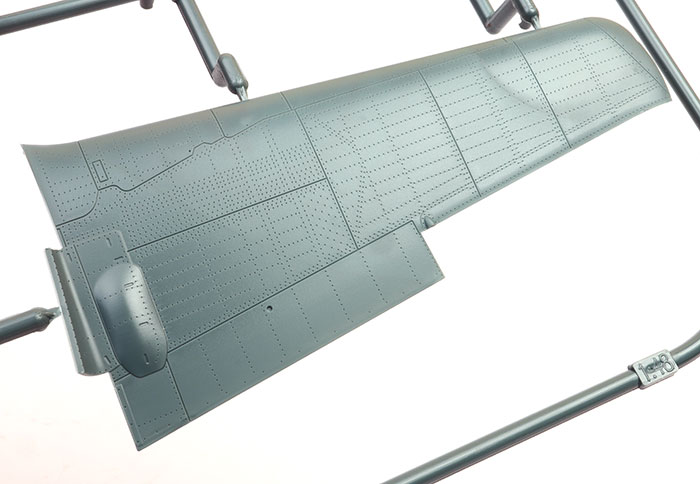
Eduard's Wurgers also boast a very high level of detail, particularly in the
cockpit with colour photo-etched parts, and the opportunity to upgrade the basic engine
provided in the kit with aftermarket parts.
The photo-etched fret boasts Eduard's recent innovation of glossy curved lenses over the individual dials. You can't see it in the photo, but the effect looks great to the naked eye!
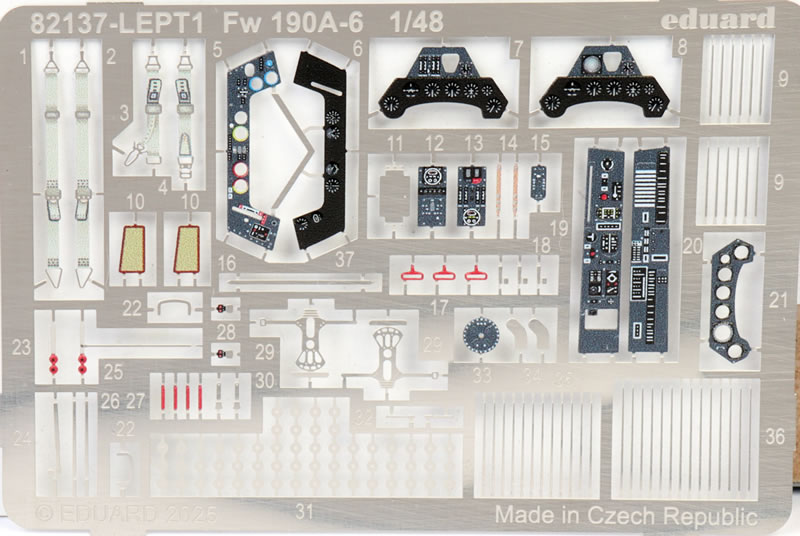
Two versions of the canopies are included - one representing and open canopy and the other closed. On the real Würger, the canopy was somewhat flexible.
This flexibility was further enhanced with a short hinge on the top.
This was necessary because the canopy rails tapered inwards back along
the fuselage, requiring the front bottom corners of the canopy to pinch
inward when opening (ie, the width was narrower when the canopy was
open).
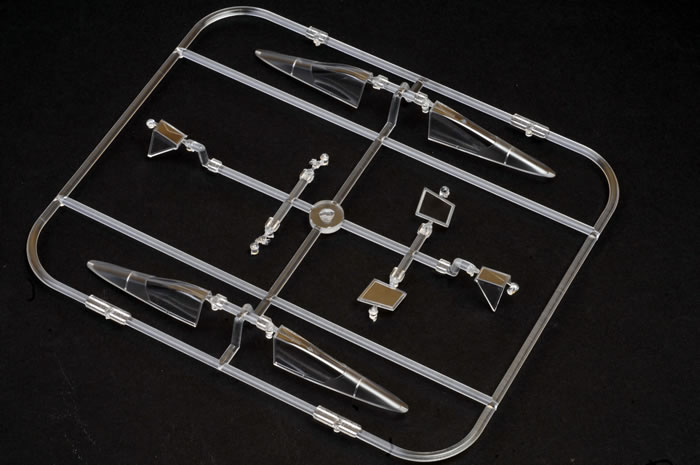
This attribute has been conveniently ignored by all Fw 190 models
prior to Eduard's new family - an open canopy would simply overhang the sides of the canopy
deck.
Both blown and flat canopies are included on the sprue, but only th flat version applies to the Fw 190 A-6.
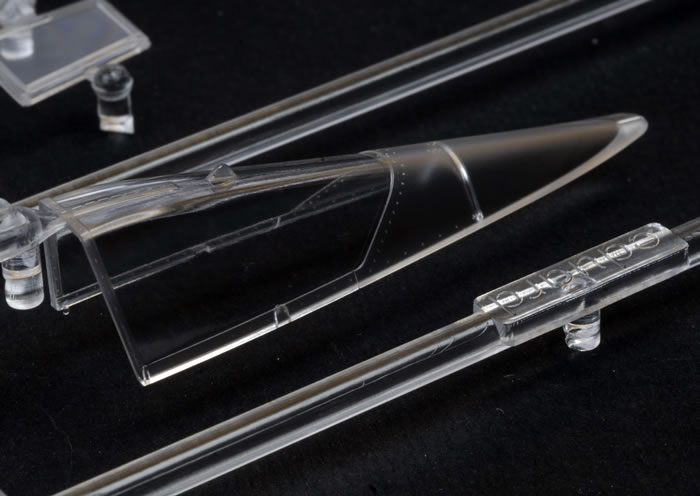
My clear parts are thin and free from distorion.
The colour photo-etched frets add useful detail. In
fact, it is difficult to imagine anyone being able to match the realism
of these crisply printed parts with paint.
This fret provides the harness, instrument panel and side consoles in
full colour,
plus supplementary metal detail parts for the cockpit and aircraft
exterior. The instrument panel should look fantastic when assembled,
incorporating all the tiny details of the dials and the characteristic
coloured surrounds of the engine gauges.
Another nice touch is the inclusion of canopy and wheel
masks in Eduard's thin flexible yellow masking material.
Instructions are supplied in a 16 page A-4 size colour booklet,
with a detailed history on the front page followed by a parts list, construction steps, and full-colour marking
guides for each of the five subjects, each with a four-view illustration, and finally a stencil placement guide.
Marking Options
Markings are provided for seven aircraft, all finished in the mid-war scheme of RLM 76 lower surfaces, with RLM 75 Grey Violet and RLM 74 Grey Green on the upper surfaces. Despite this apparent uniformity, each of the aircraft feature interesting application of camouflage and lively markings.
Specific subjects are:
-
Fw 190A-6, WNr. 550375, Lt. Heinz-Gunther Luck, 1./JG 1, Deelen, Netherlands, August 1943\
-
Fw 190A-6, WNr. 550461, Oblt. Helmut Radtke, 5./JG 54, Immola, Finland, summer 1944
-
Fw 190A-6, WNr. 550453, Hptm. Friedrich-Karl Muller, Stab /JG 300, Bonn-Hangelar, Germany, October 1944
-
Fw 190A-6, Fw. Gunther Josten, 1./JG 51, Bobruysk, the USSR, January 194
-
Fw 190A-6, WNr. 550473, Fw. Walter Nietzsche, II. /JG 300, Rheine, Germany, summer 1943
-
Fw 190A-6/R11, WNr. 550143, Oblt. Fritz Krause, 1./NJGr 10, Werneuchen, Germany, January 1944
-
Fw 190A-6/R11, II. /JG 300, Lobnitz, Germany, fall 1943
The main decal sheet is glossy in texture and printed by Eduard.

A set of decal stencils are also included.
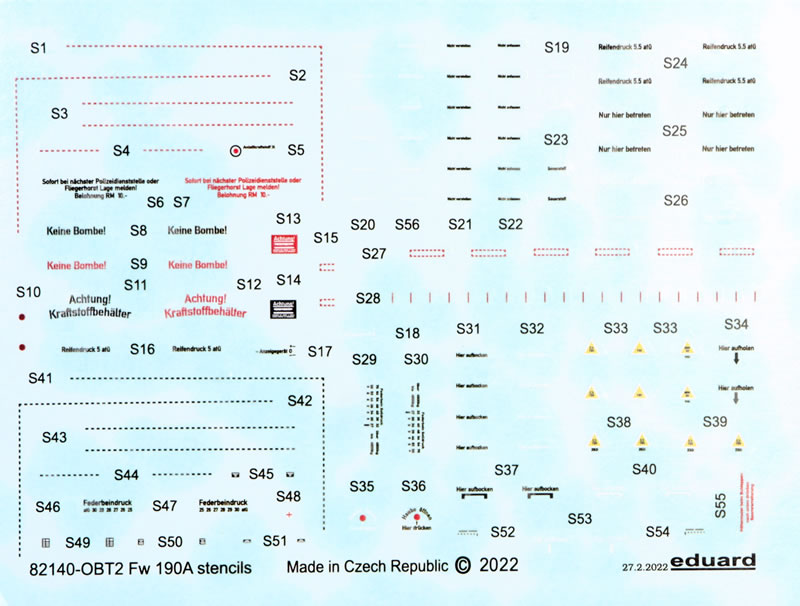
The stencil markings are printed in a flat finish and are also produced by Eduard.
Eduard has delivered an excellent kit of this important Wurger variant.
I have built five of Eduard's new generation Wurgers and this one was as delightful as its predecessors - a fast build and excellent fit all round.
I don't expect that this one to be any different!
Thanks to Eduard for the sample
Review Text Copyright © 2025 by Brett Green
Page Created 25 June, 2025
Last updated
25 June, 2025
Back to HyperScale Main Page
Back to Reviews Page |
